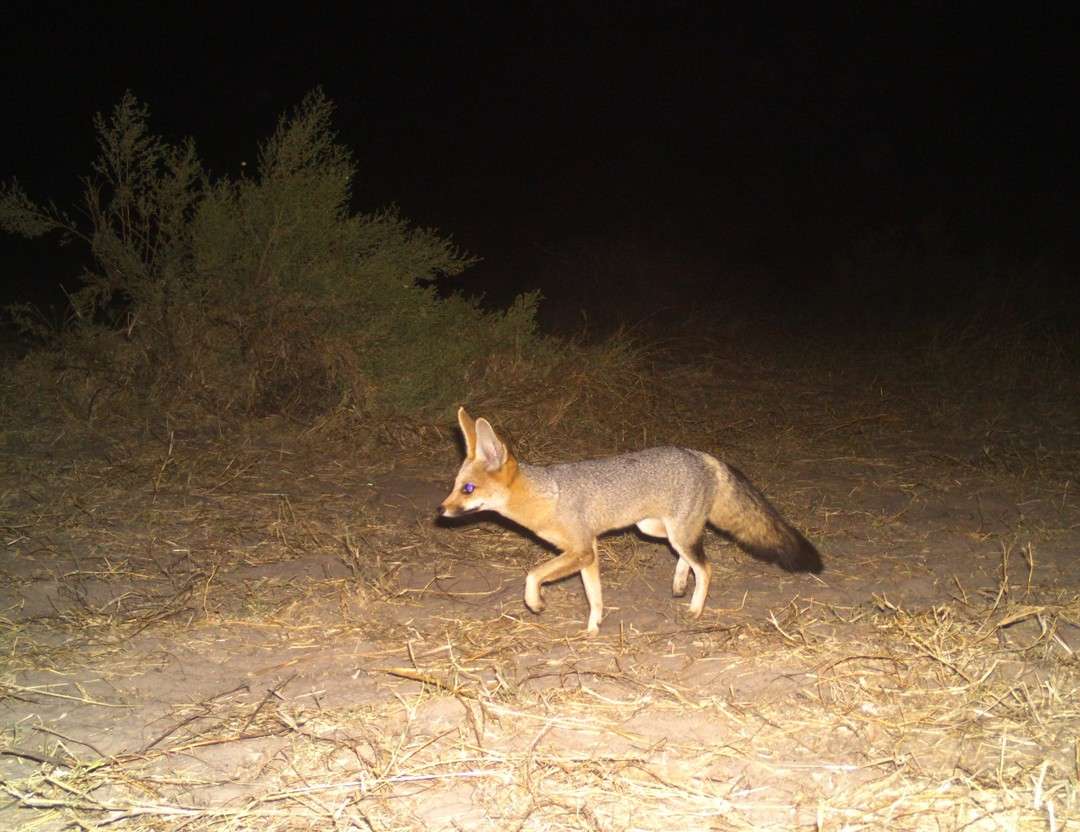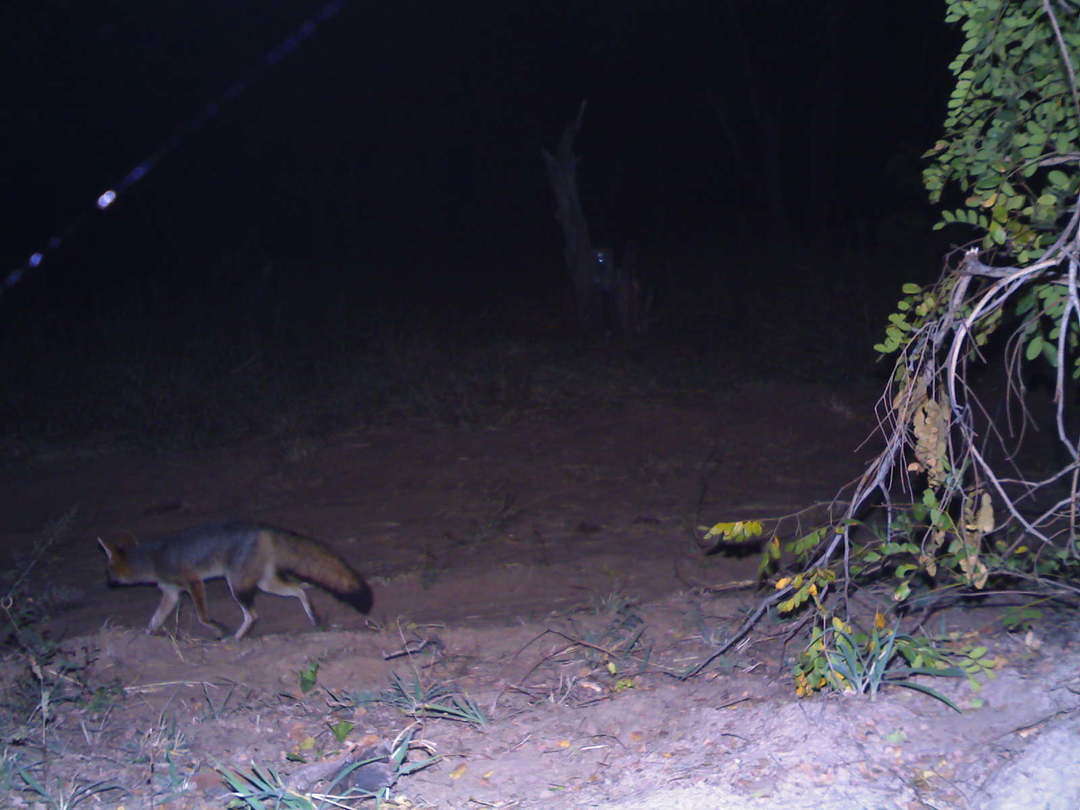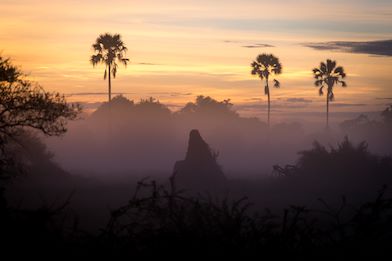Researcher Andrew Loveridge shares his thrilling news of the first-ever confirmed sighting of a Cape fox in Zimbabwe.
The Cape fox, Vulpes chama, has a body mass of just 2 to 3 kg, and is the smallest canid, and the only fox, occurring in southern Africa. Its range is largely restricted to the arid Karoo, Kalahari and Namib, with a habitat preference for open scrub, lightly wooded areas, rocky outcrops and occasionally agricultural land.
In Botswana, they occur in short grassland, Acacia scrubland and appear to favour open areas surrounding shallow seasonal pans. Populations may be limited by intraspecific conflict with black‐backed jackals, and individuals are preyed upon by other large carnivores.

Cape fox surveyed in Botswana
Due to the lack of material evidence or credible sighting records, recent assessments have considered early to mid-20th Century inclusions of western Zimbabwe and Mozambique in the Cape fox’s species range to be invalid.
Between 16 May and 17 July 2018, a camera trap survey was deployed in the eastern wild area management zone of Hwange National Park (HNP). This comprised paired trail cameras set in a grid of 41 camera trap stations spaced ~4 km apart. Trap stations were sited on game trails and sandy tracks to optimise the chances of detecting carnivores, which are known to utilise roads and tracks for travel.
Adult Cape foxes were detected on five occasions at the same location (−19.1437S; 27.3642E). It wasn’t possible to determine whether this was a single or several different individuals. The camera trap station was situated on a dirt track, in habitat dominated by Zambezi teak, silver terminalia, and ordeal trees, bushland and scrubland, on deep Kalahari sand.

Image of Cape fox captured at camera trap in eastern Hwange National Park, Zimbabwe
The closest open grassland, the habitat preferred by the species in other parts of its range, was 1.2 km north, at a Wilderness Safaris pumped waterhole, Wexcau Pan. Based on reported habitat use, the closed bushland/scrubland habitat matrix does not appear optimal, especially because competitors, including black‐backed jackals, were relatively common. A previous survey in the same area in October 2014, using the same survey design and camera trap station locations, did not detect the species.
The location at which the Cape fox was detected was a straight-line distance of 244 km north‐east of the currently accepted distribution of the species. This is the north‐easternmost record for the species, and the first-ever verified occurrence within Zimbabwe.
Our overall camera trapping records suggest that Cape foxes are extremely rare in western Zimbabwe, having been recorded at only one of 536 camera trap sites deployed between 2013 and 2018, and detected on only five of a total of 24,175, 24‐hour trapping days.
The paucity of records within the Zimbabwean surveys is unlikely to be due to poor detection of the species by camera traps, as Cape foxes were commonly detected (in 37 out of 100 camera stations) in Makgadikgadi Pans National Park, Botswana, a site on the northern boundary of the accepted species range, using the same cameras and methodology.
The rarity of foxes within western Zimbabwe, and the seemingly unfavourable habitat in which they were found, suggests the individual or individuals detected in our survey were either recent pioneering colonists or vagrant dispersers. The occurrence of Cape foxes outside the northern margins of the accepted species range may be the evidence of colonisation of formerly mesic areas by an arid‐adapted species, as a result of increasing aridification in the region.
Cape fox range expansion is not unique amongst canids. In contrast to the global decline in range and population size of many medium- to large-sized carnivores, there are several examples of canids expanding their ranges as a result of environmental change or more favourable conservation policies: golden jackals have expanded westwards into Europe, coyotes have expanded south into Central America and crab‐eating foxes northwards into northern South America.
This northward extension of the Cape fox distribution may be another example of range expansion by an adaptable and opportunistic canid in the face of changing environmental conditions.
© Loveridge AJ, Seymour‐Smith JL, Sibanda AL, Mabika C, Ngosi E, Macdonald DW. First confirmed record of a Cape fox, Vulpes chama, in Zimbabwe. Afr J Ecol. 2019; 00:1–4. https://doi.org/10.1111/aje.12605
AUTHORS’ ACKNOWLEDGEMENTS
We thank Zimbabwe Parks and Wildlife Authority for permission to undertake this work in Hwange National Park, Wilderness Safaris Zimbabwe for provision of logistical support and R. Rees, L. Mpofu, J. Hunt and HNP research staff for field support. Research funded by the Robertson Foundation.







